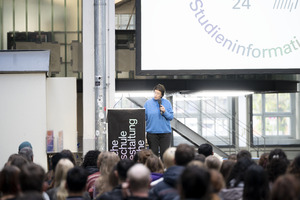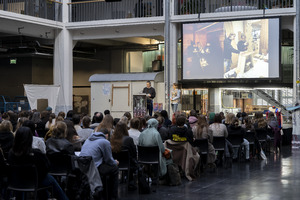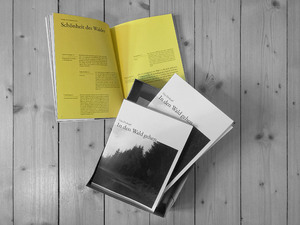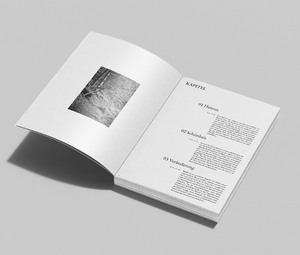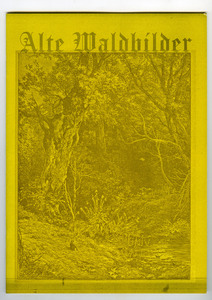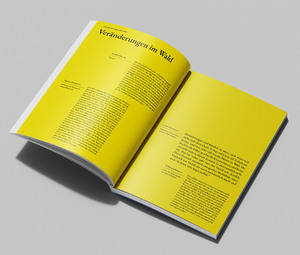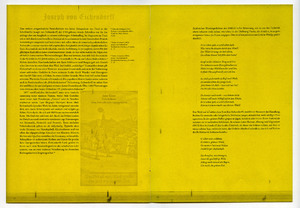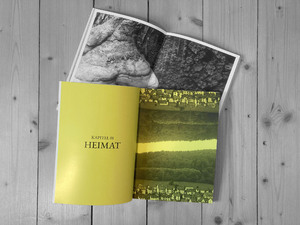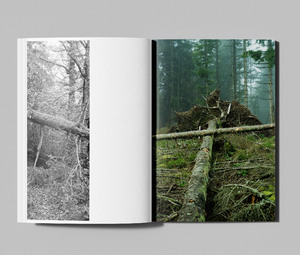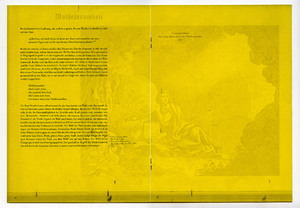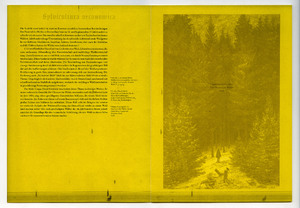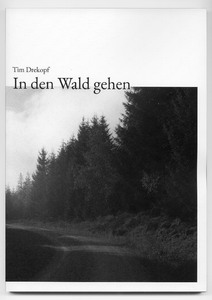"Kommunikationsdesign"
| Begriff | Kommunikationsdesign |
| Metakey | Studiengang (institution:program_of_study) |
| Typ | Keyword |
| Vokabular | HfG |
419 Inhalte
- Seite 1 von 35
Informationstag HFG 24
- Titel
- Informationstag HFG 24
- Autor/in
- Datierung
- 20.11.2024
- Stadt
- Land
- Titel
- Informationstag HFG 24
- Urheberrechtshinweis
- © Staatliche Hochschule für Gestaltung Karlsruhe photo: Jehad Othman
- Rechtsschutz/Lizenz
- Medienersteller/in
- Studiengang
- Importiert am
- 27.11.2024
- Übergeordnete Sets
- 1
Informationstag HFG 24
- Titel
- Informationstag HFG 24
- Autor/in
- Datierung
- 20.11.2024
- Stadt
- Land
- Titel
- Informationstag HFG 24
- Urheberrechtshinweis
- © Staatliche Hochschule für Gestaltung Karlsruhe photo: Jehad Othman
- Rechtsschutz/Lizenz
- Medienersteller/in
- Studiengang
- Importiert am
- 27.11.2024
- Übergeordnete Sets
- 1
In den Wald gehen
- Titel
- In den Wald gehen
- Autor/in
- Kategorie
- Typ des Projekts/Werks
- Schlagworte
- Datierung
- Januar 2025
- Sprache
- Abmessungen
- 180mm x 250mm
- Ort: Institution
- Ort
- Lichtbrücke
- Stadt
- Land
- Titel
- In den Wald gehen
- Urheberrechtshinweis
- © Tim Drekopf
- Rechtsschutz/Lizenz
- Freigabe Nutzung HfG
- Medienersteller/in
- Beziehung/Funktion
- Projektleiter/in
- Semester
- Studiengang
- Typ der Abschlussarbeit
- Importiert am
- 11.02.2025
- Übergeordnete Sets
- 1
In den Wald gehen
- Titel
- In den Wald gehen
- Autor/in
- Kategorie
- Typ des Projekts/Werks
- Schlagworte
- Datierung
- Januar 2025
- Sprache
- Abmessungen
- 180mm x 250mm
- Ort: Institution
- Ort
- Lichtbrücke
- Stadt
- Land
- Titel
- In den Wald gehen
- Urheberrechtshinweis
- © Tim Drekopf
- Rechtsschutz/Lizenz
- Freigabe Nutzung HfG
- Medienersteller/in
- Beziehung/Funktion
- Projektleiter/in
- Semester
- Studiengang
- Typ der Abschlussarbeit
- Importiert am
- 11.02.2025
- Übergeordnete Sets
- 1
In den Wald gehen
- Titel
- In den Wald gehen
- Autor/in
- Kategorie
- Typ des Projekts/Werks
- Schlagworte
- Datierung
- Januar 2025
- Sprache
- Abmessungen
- 180mm x 250mm
- Ort: Institution
- Ort
- Lichtbrücke
- Stadt
- Land
- Titel
- In den Wald gehen
- Urheberrechtshinweis
- © Tim Drekopf
- Rechtsschutz/Lizenz
- Freigabe Nutzung HfG
- Medienersteller/in
- Beziehung/Funktion
- Projektleiter/in
- Semester
- Studiengang
- Typ der Abschlussarbeit
- Importiert am
- 11.02.2025
- Übergeordnete Sets
- 1
In den Wald gehen
- Titel
- In den Wald gehen
- Autor/in
- Kategorie
- Typ des Projekts/Werks
- Schlagworte
- Datierung
- Januar 2025
- Sprache
- Abmessungen
- 180mm x 250mm
- Ort: Institution
- Ort
- Lichtbrücke
- Stadt
- Land
- Titel
- In den Wald gehen
- Urheberrechtshinweis
- © Tim Drekopf
- Rechtsschutz/Lizenz
- Freigabe Nutzung HfG
- Medienersteller/in
- Beziehung/Funktion
- Projektleiter/in
- Semester
- Studiengang
- Typ der Abschlussarbeit
- Importiert am
- 11.02.2025
- Übergeordnete Sets
- 1
In den Wald gehen
- Titel
- In den Wald gehen
- Autor/in
- Kategorie
- Typ des Projekts/Werks
- Schlagworte
- Datierung
- Januar 2025
- Sprache
- Abmessungen
- 180mm x 250mm
- Ort: Institution
- Ort
- Lichtbrücke
- Stadt
- Land
- Titel
- In den Wald gehen
- Urheberrechtshinweis
- © Tim Drekopf
- Rechtsschutz/Lizenz
- Freigabe Nutzung HfG
- Medienersteller/in
- Beziehung/Funktion
- Projektleiter/in
- Semester
- Studiengang
- Typ der Abschlussarbeit
- Importiert am
- 11.02.2025
- Übergeordnete Sets
- 1
In den Wald gehen
- Titel
- In den Wald gehen
- Autor/in
- Kategorie
- Typ des Projekts/Werks
- Schlagworte
- Datierung
- Januar 2025
- Sprache
- Abmessungen
- 180mm x 250mm
- Ort: Institution
- Ort
- Lichtbrücke
- Stadt
- Land
- Titel
- In den Wald gehen
- Urheberrechtshinweis
- © Tim Drekopf
- Rechtsschutz/Lizenz
- Freigabe Nutzung HfG
- Medienersteller/in
- Beziehung/Funktion
- Projektleiter/in
- Semester
- Studiengang
- Typ der Abschlussarbeit
- Importiert am
- 11.02.2025
- Übergeordnete Sets
- 1
In den Wald gehen
- Titel
- In den Wald gehen
- Autor/in
- Kategorie
- Typ des Projekts/Werks
- Schlagworte
- Datierung
- Januar 2025
- Sprache
- Abmessungen
- 180mm x 250mm
- Ort: Institution
- Ort
- Lichtbrücke
- Stadt
- Land
- Titel
- In den Wald gehen
- Urheberrechtshinweis
- © Tim Drekopf
- Rechtsschutz/Lizenz
- Freigabe Nutzung HfG
- Medienersteller/in
- Beziehung/Funktion
- Projektleiter/in
- Semester
- Studiengang
- Typ der Abschlussarbeit
- Importiert am
- 11.02.2025
- Übergeordnete Sets
- 1
In den Wald gehen
- Titel
- In den Wald gehen
- Autor/in
- Kategorie
- Typ des Projekts/Werks
- Schlagworte
- Datierung
- Januar 2025
- Sprache
- Abmessungen
- 180mm x 250mm
- Ort: Institution
- Ort
- Lichtbrücke
- Stadt
- Land
- Titel
- In den Wald gehen
- Urheberrechtshinweis
- © Tim Drekopf
- Rechtsschutz/Lizenz
- Freigabe Nutzung HfG
- Medienersteller/in
- Beziehung/Funktion
- Projektleiter/in
- Semester
- Studiengang
- Typ der Abschlussarbeit
- Importiert am
- 11.02.2025
- Übergeordnete Sets
- 1
In den Wald gehen
- Titel
- In den Wald gehen
- Autor/in
- Kategorie
- Typ des Projekts/Werks
- Schlagworte
- Datierung
- Januar 2025
- Sprache
- Abmessungen
- 180mm x 250mm
- Ort: Institution
- Ort
- Lichtbrücke
- Stadt
- Land
- Titel
- In den Wald gehen
- Urheberrechtshinweis
- © Tim Drekopf
- Rechtsschutz/Lizenz
- Freigabe Nutzung HfG
- Medienersteller/in
- Beziehung/Funktion
- Projektleiter/in
- Semester
- Studiengang
- Typ der Abschlussarbeit
- Importiert am
- 11.02.2025
- Übergeordnete Sets
- 1
In den Wald gehen
- Titel
- In den Wald gehen
- Autor/in
- Kategorie
- Typ des Projekts/Werks
- Schlagworte
- Datierung
- Januar 2025
- Sprache
- Abmessungen
- 180mm x 250mm
- Ort: Institution
- Ort
- Lichtbrücke
- Stadt
- Land
- Titel
- In den Wald gehen
- Urheberrechtshinweis
- © Tim Drekopf
- Rechtsschutz/Lizenz
- Freigabe Nutzung HfG
- Medienersteller/in
- Beziehung/Funktion
- Projektleiter/in
- Semester
- Studiengang
- Typ der Abschlussarbeit
- Importiert am
- 11.02.2025
- Übergeordnete Sets
- 1
